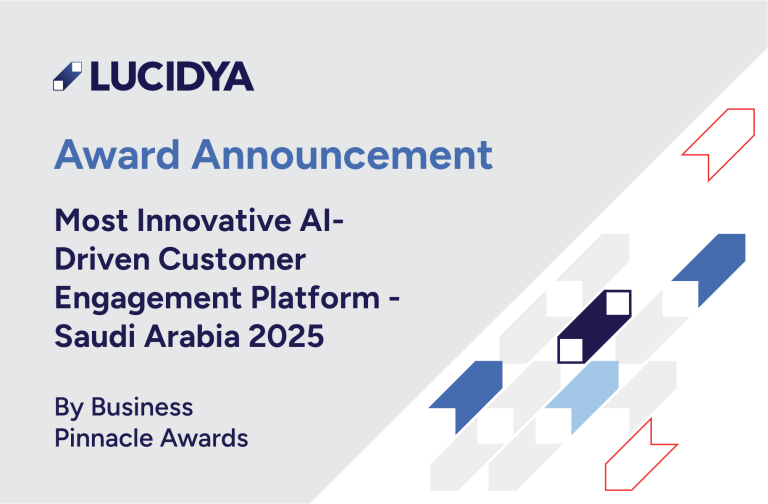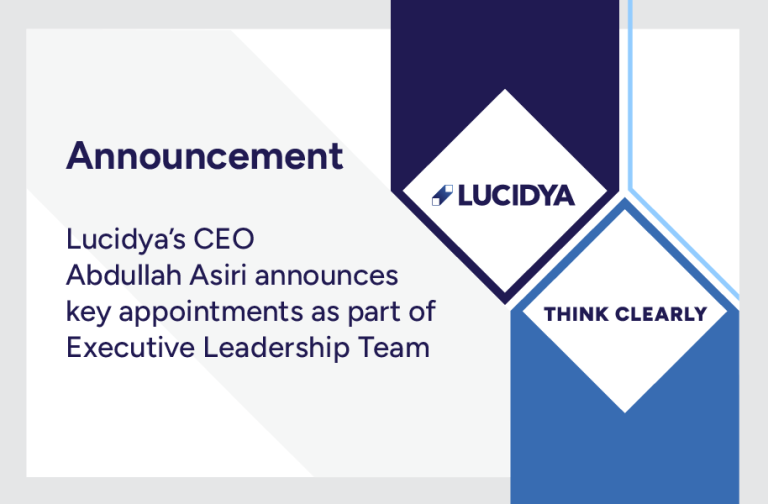
Designing Surveys and Customer Experience: Strategies for Maximizing Data Collection Efficiency
Designing Surveys and Customer Experience: Strategies for Maximizing Data Collection Efficiency!
The era of digitization and rapid technological development in which we live has elevated customer expectations. Today’s customers seek “Easy, effortless, and fast” as critical benefits from brands. When these three advantages are seamlessly integrated, we can confidently say that the customer has been successfully satisfied, resulting in an exceptional customer experience.
Despite the rapid pace of digital acceleration, it can paradoxically lead to increased customer frustration and dissatisfaction. While brands strive to meet customer expectations, the gap between them and customers tends to widen due to the ever-evolving nature of technology, which raises customer expectations even further.
This widening gap can create barriers that impede customer satisfaction and hinder business growth. So, what are the obstacles faced by customers, and how can organizations gather more data with fewer constraints?
What are Customer Barriers?
Customer barriers or what is known as Customer Friction refers to any aspect of the customer experience that hinders their ability to purchase a product, utilize it effectively, or derive value from it. In simpler terms, it refers to the obstacles or challenges that customers encounter when engaging with a specific product or service.
Examples of Customer Barriers
Here are some examples that illustrate the concept of customer barriers:
- Registration difficulties: When customers encounter obstacles while attempting to create a new account on the website or mobile app, such as encountering strict password requirements or going through complex verification procedures.
- Confusing user interface: When the design of the website or application’s user interface is unclear or complicated, it can result in difficulties browsing the content or locating the necessary information.
- Poor interaction experience: A negative interaction experience occurs when customers face challenges in communicating with the customer service team, such as experiencing slow response times or receiving inadequate solutions to their issues.
- Complicated payment processes: When customers encounter convoluted payment procedures, such as being required to provide excessive payment information or facing limited payment method options.
- Failure to meet customer expectations: When there is a significant disparity between what customers anticipate from a product or service and what is actually delivered, such as receiving low-quality products or encountering unprofessional customer service.
Designing Surveys: The Importance of Understanding Customer Needs and Expectations
The importance of understanding customer needs and expectations lies in the fact that customer constraints encompass any challenges faced by customers. To mitigate these obstacles, it becomes crucial to gain a comprehensive understanding of customer needs and expectations:
Customer Satisfaction
By comprehending customer needs and expectations, a company can customize its offerings to align with the requirements of its customers. This results in elevated levels of customer satisfaction since they receive precisely the services or products they desire.
Satisfied customers are more inclined to remain loyal and make repeat purchases while also recommending the brand to others.
Competitive Advantage
In a fiercely competitive market, comprehending customer needs provides the brand with a competitive advantage. By identifying gaps or unfulfilled requirements in the market, the company can create distinctive products or services that differentiate it from competitors. This differentiation leads to an expansion of market share and fosters customer loyalty.
Product & Service Development
Customer needs offer opportunities for product and service development and enhancement. By actively listening to customer feedback and carefully evaluating their input, businesses can create innovative solutions that address pain points and incorporate desired features, thereby delivering added value.
This approach enables the company to meet customer expectations effectively and minimize the development of undesired products and services that fail to meet customer expectations.
Customer Retention and Fostering Customer Loyalty
Understanding customer needs and expectations allows the company to proactively address their problems and concerns and provide exceptional customer service. This builds strong relationships with customers, increases their trust in the brand, and encourages them to buy again.
Satisfied customers usually become brand ambassadors who recommend it to others and, as a result, attract new customers and increase sales.
Adapting to Dynamic Market Conditions
Customer needs and expectations are dynamic, influenced by shifting market trends and technological advancements. By consistently monitoring and comprehending these changes, companies can adjust their strategies, offerings, and customer experiences accordingly. This adaptability ensures that the business stays relevant and competitive in the market.
How can customer constraints be identified?
Here are some steps to help identify customer constraints:
Empathizing with the customer
Put yourself in the customer’s shoes and gain an understanding of their experience. Identify any aspects that may cause inconvenience throughout their journey of purchasing the product or service, and work towards improving them.
Conducting Data Analysis
Utilize tools like Google Analytics to analyze data and identify customer barriers. By examining the number of pages where customers frequently exit, you can pinpoint the areas where they face the most difficulties.
Following up on Customer Feedback
Listening to customer feedback is the best way to identify customer constraints. It may happen that the company thinks it is doing a good job but customer comments and reactions may show the opposite. So it’s essential to follow the comments to find out exactly where the problem lies.
Engaging with Stakeholders
Meeting with the sales team or other departments that interact with customers provides valuable insights into constraints. These employees, who have direct customer interactions, often possess knowledge of the most common issues, inquiries, or difficulties faced by customers.
Mapping the Customer Journey
Map out the customer journey by creating a step-by-step list of the process customers must go through before engaging with the brand. The more steps involved, the greater the potential for difficulties and obstacles. Find ways to streamline and simplify the customer journey, making it clear and effortless.
Designing Surveys: Why is it important to reduce obstacles?
In today’s customer-centric market, it is crucial to minimize obstacles. By mitigating the barriers or challenges encountered by customers, we can enhance the overall customer experience and foster long-term loyalty. Key strategies to achieve this include streamlining processes, enhancing on-site mobility, and providing prompt customer support, thereby reducing disruptions.
When customers can effortlessly locate desired products or services, make seamless purchases, and receive timely assistance, their satisfaction is likely to be sustained. Moreover, satisfied customers are more inclined to refer others and make repeat purchases.
Furthermore, by reducing constraints, companies can enhance operational efficiency, cut costs, and boost revenue streams.
Designing Surveys: How to design polls with minimal barriers
When crafting surveys, it is essential to ensure a seamless and user-friendly experience, minimize obstacles, and encourage participation. Here are some tips to assist you:
Keep it concise
Long surveys can be confusing for customers and discourage them from participating. Keep in mind that customers have limited time and attention spans. To maintain engagement, focus on essential questions and make the survey as short as possible.
Use clear and straightforward language.
Avoid technical jargon or complex terms that may be unfamiliar to customers. Formulate survey questions in a clear, easy-to-understand manner, and limit their number.
Prioritize relevant questions
Design questions that are directly related to customer experiences or interactions with the product or service. Irrelevant questions can frustrate participants and prompt them to abandon the survey prematurely.
Arrange questions logically
Organize questions in a logical sequence, starting with straightforward and direct inquiries to engage participants. Gradually progress to more complex or open-ended questions.
Ensure mobile-friendliness
With the growing usage of smartphones and tablets, it is crucial to optimize surveys for mobile devices. Test the survey on various devices and screen sizes to provide a seamless experience for mobile users.
Display progress indicators
Incorporate progress indicators, such as a progress bar, to inform participants about the survey’s completion status. This manages customer expectations and reduces the likelihood of respondents leaving due to uncertainty about the remaining duration.
Include a skip option.
Offering a skip option allows participants to bypass questions that are irrelevant to their specific circumstances. This personalizes the experience and reduces barriers for respondents.
Testing and optimization
Before making the survey public, conduct pilot tests with a small group of respondents. This helps identify and address potential issues or areas that may be unclear.
By implementing these recommendations, you can improve the survey experience, reduce constraints, and enhance overall outcomes.
How can I obtain more data with fewer constraints?
The following strategies can be used to obtain more data with fewer obstacles:
Streamline data collection
Simplify the data collection process for participants by reducing steps or data entry requirements. Utilize user-friendly interfaces and provide clear instructions to minimize obstacles and encourage greater participation.
Offer incentives
Providing incentives or rewards can incentivize participants to contribute more data. Consider offering discounts, exclusive access to benefits, or other tangible rewards that align with the participants’ interests. Incentives help alleviate concerns and motivate individuals to provide additional data.
Ensure data privacy and security.
Establish robust data privacy policies and practices to instill confidence in participants. Clearly communicate how their data will be used, stored, and protected. Transparency and a commitment to data security can foster trust and encourage individuals to share more data.
Leveraging existing data sources
Utilizing relevant existing data diminishes limitations and aids in acquiring additional data. This approach would augment the data pool without the need for direct data collection.
It is crucial to acknowledge that while gathering more data is valuable, equal importance should be placed on preserving privacy and ensuring ethical data collection practices.
Achieve Seamless Data Acquisition with Lucidyas
Lucidya is a platform designed to deliver an analysis and management solution for customer experience. By employing artificial intelligence algorithms, Lucidya enables monitoring and analysis of customer interactions across diverse social media channels, catering to both Arabic and English languages. This platform offers a comprehensive product package that minimizes constraints and facilitates increased data gathering.
Lucidya Platform Product Package
Lucidya offers the following product package:
- Social listening.
- Analysis of communication channels.
- Questionnaires.
- Audience (customer data platform).
Conclusion
In the digital age, gathering customer data is crucial for the success of brands as it enables them to meet customer needs and enhance their services. However, obtaining this data can present challenges if it creates constraints for customers. Companies should focus on building trusting relationships with their customers through exceptional experiences and by respecting their privacy, which allows them to obtain more data with minimal hindrance.
Read: Enhancing Customer Experience in the Travel Industry: Utilizing Customer Data Platforms









